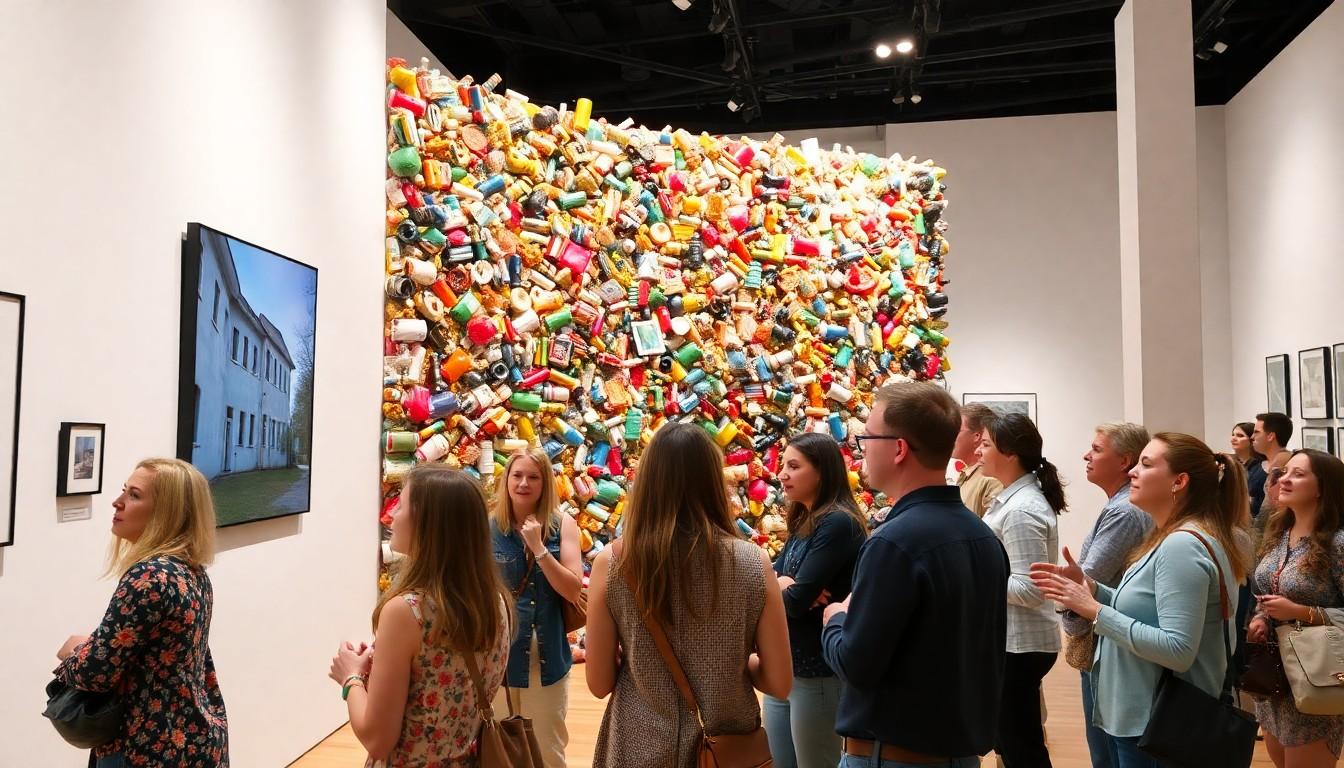Modern art often leaves viewers scratching their heads, wondering if they’ve stumbled into a gallery or a prank show. With splashes of paint on canvas and sculptures that resemble everyday objects, it’s no wonder some people dub it “stupid.” But is it really just nonsense, or is there a deeper message hidden behind the chaos?
As the lines between creativity and absurdity blur, the world of modern art challenges traditional notions of beauty and meaning. It invites both admiration and ridicule, sparking debates that can get heated faster than a critic’s coffee. Dive into the world of modern art, where the bizarre meets the brilliant, and discover why some pieces make you laugh while others leave you questioning your sanity. It’s a wild ride through the colorful, quirky, and sometimes downright ridiculous side of artistic expression.
Table of Contents
ToggleUnderstanding Stupid Modern Art
Modern art often perplexes viewers. This art form disregards conventional standards, leading to diverse interpretations.
Definition and Characteristics
Stupid modern art defies traditional aesthetics. It amplifies the absurd, showcasing unconventional materials and techniques. Spectators often encounter works that provoke confusion or amusement. Characteristics include minimalism, conceptualism, and installation pieces. Spectacular visuals often accompany pieces that challenge expectations. The intent behind these artworks may prioritize irony or social commentary, emphasizing that meaning often resides in interpretation rather than appearance.
Historical Context
Modern art emerged in the late 19th century. Influences include movements like Impressionism and Dadaism. Artists sought to reflect a rapidly changing world, responding to technological and social transformations. The 20th century witnessed an explosion of styles and ideas, shaping contemporary art’s landscape. Movements such as Surrealism and Abstract Expressionism played crucial roles in pushing boundaries. Shifts in cultural norms and philosophical concepts also contributed significantly to modern art’s evolution.
Critiques of Stupid Modern Art

Critics often question the legitimacy of modern art that appears nonsensical or trivial. They argue that this type of art lacks technical skill and meaningful content.
Common Arguments Against It
Many adversaries of stupid modern art believe it oversimplifies complex themes. They contend that using everyday objects diminishes the value of true artistic endeavors. Critics frequently suggest that reliance on shock value detracts from emotional connection and genuine thought. Some view the aesthetic choices as a rejection of tradition that undermines the craft. Familiar sentiments express disappointment over the difficulty in finding deeper meaning in what seems absurd.
Perspectives from Artists and Critics
Artists themselves sometimes defend their unconventional choices, emphasizing intention over appearance. They assert that provoking thought, regardless of confusion, embodies artistic success. Critics also offer varied opinions, with some valuing the dialogue that such art initiates. They recognize the way it challenges viewers to reassess their definitions of art and beauty. Diverse viewpoints highlight a broader cultural commentary that resonates with contemporary societal issues. Such discussions enrich the ongoing debate about the value of modern art in the creative landscape.
Examples of Stupid Modern Art
Various pieces of modern art prompt debate regarding their artistic merit. This section explores notable examples and the impact they had on art perception.
Notable Pieces and Their Impact
“Fountain” by Marcel Duchamp remains a quintessential work in the realm of stupid modern art. This simple urinal challenges traditional views on what constitutes art, igniting discussions on creativity and intention. Damien Hirst’s “The Physical Impossibility of Death in the Mind of Someone Living,” featuring a shark in formaldehyde, provokes curiosity and discomfort among viewers. Similarly, “My Bed” by Tracey Emin showcases a messy bed as an artistic statement, stirring both admiration and bewilderment. These works often redefine boundaries, encouraging audiences to reevaluate their definitions of art and creativity.
Public Reactions and Controversies
Public reactions to these artworks frequently oscillate between fascination and disdain. Critics often label them as absurd, claiming they lack substance or skill. Many viewers express frustration over the perceived effortlessness of these creations, questioning artistic intent. Gallery discussions often turn heated, with defenders arguing for the importance of conceptual depth. Controversy arises, particularly in exhibition settings, as some patrons feel alienated by the disconnection from traditional art forms. These responses reveal the complexity of modern art’s relationship with society, highlighting differing perspectives on value and meaning.
The Importance of Dialogue on Stupid Modern Art
Dialogue surrounding stupid modern art fosters understanding and appreciation. Creative works often provoke differing interpretations, enabling conversations between artists and audiences. People engaging with these pieces can express feelings, thoughts, and reactions, creating a shared experience.
Bridging the Gap Between Artists and Audiences
Communication plays a crucial role in connecting artists and viewers. Art events and discussions provide opportunities to learn about the creator’s intentions. Artists sharing insights about their works enhance viewers’ experiences. This connection leads to a deeper understanding of the absurdity in modern art and its underlying messages. Engaging dialogues encourage empathy, allowing audiences to explore diverse interpretations. Healthy discourse benefits both parties, leading to a richer appreciation of artistic expression.
The Role of Education in Art Appreciation
Education significantly impacts how individuals perceive modern art. Art programs and workshops help demystify unconventional styles. Learning about the historical and cultural context of modern art invites viewers to question assumptions. Knowledge equips the audience to critically analyze works labeled as stupid, fostering deeper engagement. Courses focusing on interpretation and critique inspire confidence when discussing art. Ultimately, educated audiences can transcend initial reactions of confusion or disdain, entering a more meaningful conversation about creativity and intention.
The world of modern art, particularly the concept of “stupid modern art,” continues to spark debate and intrigue. Its blend of absurdity and creativity forces viewers to confront their perceptions of beauty and meaning. While some may dismiss these works as lacking substance, others find value in the conversations they ignite.
As society evolves, so does the interpretation of art. Engaging with these unconventional pieces encourages deeper reflection and dialogue about artistic intention. By fostering understanding and appreciation, audiences can navigate the chaotic landscape of modern art, ultimately enriching their experience and broadening their perspectives.



